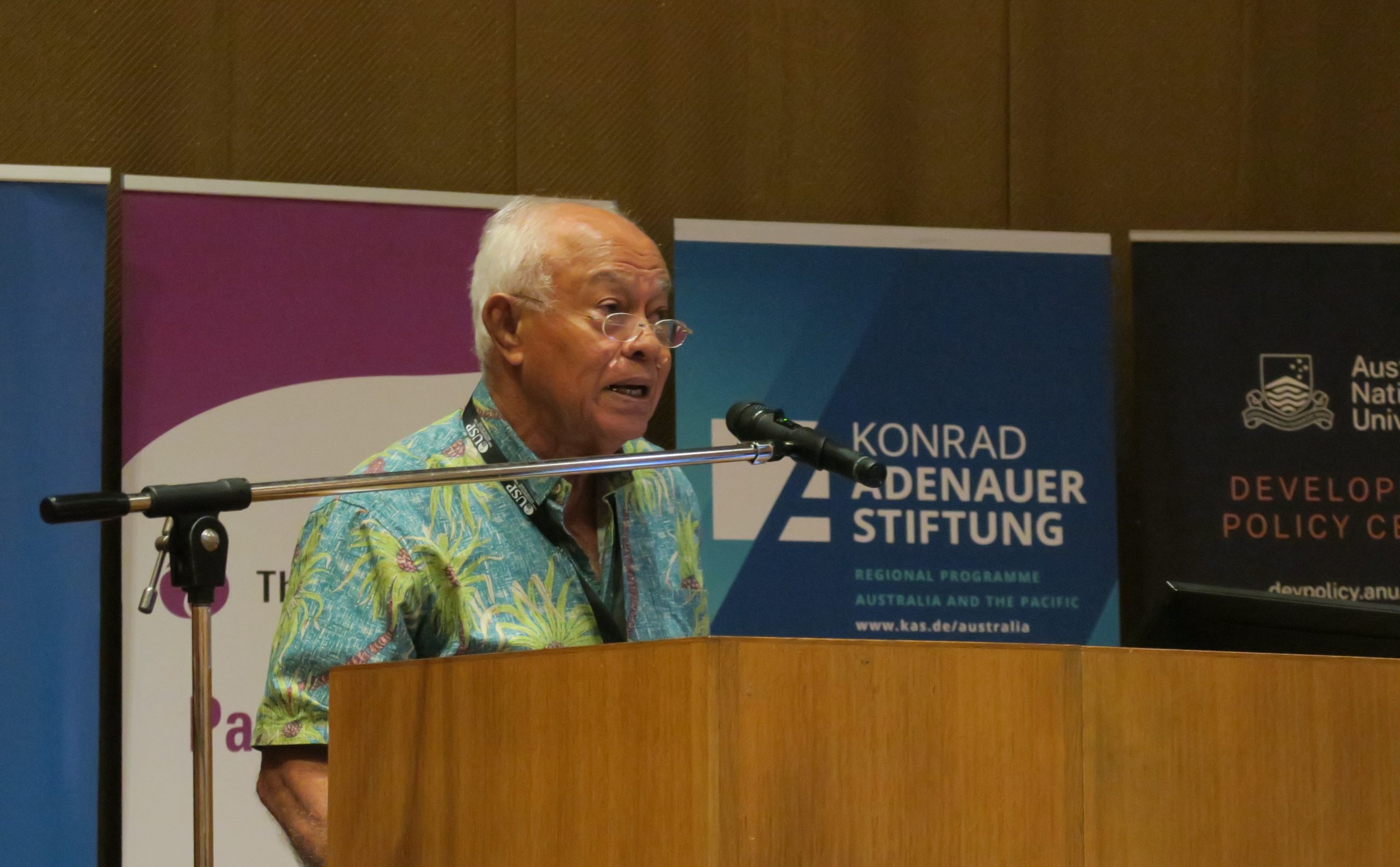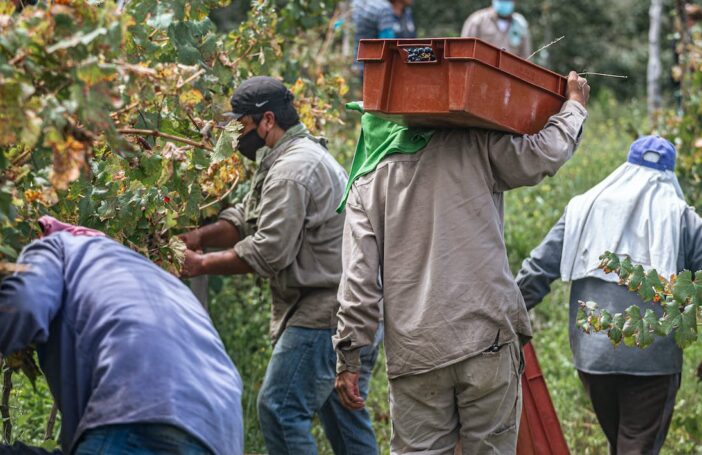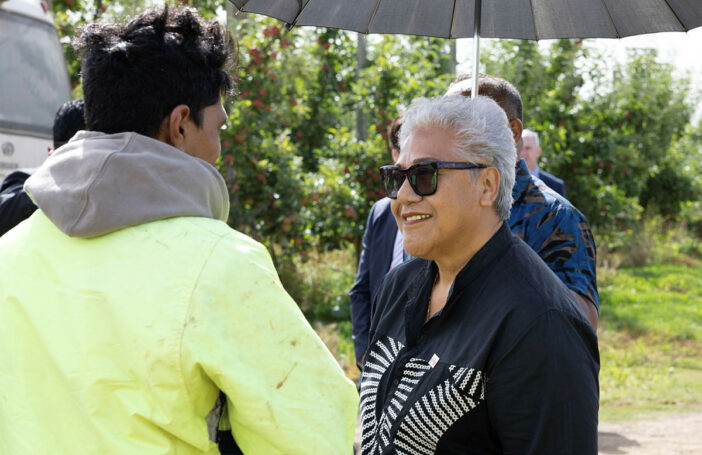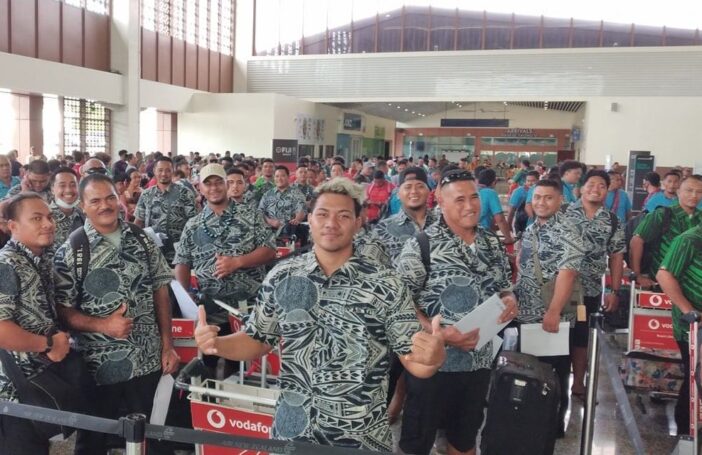This three-part blog is an edited version of the keynote address given by Professor Meleisea at the 2023 Pacific Update, on 15 June.
Since 2007, Samoans have become aware that those returning from seasonal work often have the means to build modern houses, to buy cars and furniture and home appliances, and to give large donations to their churches. Having money for these things raises the social and economic status of their families in a hierarchical society.
Evidence of the desperation to earn money from seasonal work was demonstrated in 2021, when thousands of anxious Samoan men and women tried to crowd into a church hall where registration was being held, accidently breaking its windows and doors.
The dilemma of labour mobility was expressed at a welcome home event for seasonal workers in Samoa last year. Our Prime Minister Fiamē Naomi Mata’afa told the assembled young men and women and their families, “I want Samoa to be a place where our people want to live.”
If you will excuse my cliché, the government can be said to be “between a rock and a hard place”. In other words, Samoa wants prosperity without losing its most capable people, but at the same time it wants prosperity that cannot be afforded by working in Samoa. Or, as the Samoan proverbial expressions put it, “we want the trees in the forest but are afraid of their spirits” (E mana’o I le vao ae o lo’o mamalu mai le aitu I le aoa), or “we want yams but we are afraid of the work of digging up stones so we can plant them” (E mana’o e le ufi ae fefe I le papa). The government is concerned about the increasing expectation among Samoan people that labour migration is the only means of achieving a better life.
As of early 2023, Samoa had five labour mobility schemes under government supervision and regulation. The schemes have been framed by both the receiving and sending governments from a win-win perspective, intended to assist the sectors in New Zealand and Australia experiencing labour shortages, and at the same time assist unemployed Samoans and other Pacific Islanders to earn money, acquire job skills, and accumulate savings to send home to improve standards of living and economic development.
Of these schemes, one supplied a small number of semi-skilled workers for construction work through the New Zealand Canterbury Trade Employment Initiative; another supplied meat workers to a New Zealand meat packing company. But far larger were the schemes on which many thousands of Samoans have gone aboard to work.
The Recognised Seasonal Employer (RSE) scheme in New Zealand commenced in 2007, to supply seasonal labour from selected Pacific Island countries to the horticulture and viticulture industries. Temporary visas are offered to workers under the scheme for three to a maximum of seven months.
The Seasonal Worker Programme (SWP) in Australia has since 2018 offered visas for seasonal work in the agriculture, hotel and restaurant sectors for up to nine months per contract.
Australia’s Pacific Labour Scheme (PLS) offers longer term visas for employment for up to three years in rural and regional hotels and restaurants, health care and social assistance, as well as non-seasonal agriculture, forestry and fishing. Many of the Samoan workers hired on this scheme to care for old people in rest homes have paid thousands of dollars in fees. These are for qualifying courses offered by private Australian training firms that then find them jobs in rural and remote Australian towns. In addition, the Australia Pacific Training Coalition (APTC) has offered free training in trade skills to Samoans and other Pacific Islanders, that qualify them to work in Australia.
At the same time, the Star-Kist Company in American Samoa is actively recruiting graduates from Samoa with technical and vocational qualifications to work in its cannery in Pago Pago.
The New Zealand and Australia labour mobility schemes were specifically designed to provide work to unemployed young people, however our research has shown that a significant proportion of the workers left jobs in the private and public sectors to become seasonal workers. They somehow managed to fool the government agency managing the schemes, as well as labour recruiters in Samoa and abroad, that they were unemployed. Thus the situation is that the public and private sectors in Samoa and overseas employers were competing for services from the same pool of young, fit, literate people.
The government of Samoa has long sought foreign investment, especially in industries that would create employment opportunities. It was hoped that Samoa’s large number of unemployed youth and its low minimum wage would attract such investment. So when the Yazaki Corporation of Japan showed interest in relocating their automobile wiring assembly plants from Australia to Samoa, the government responded with tax incentives and promises to provide land and build premises for the company to lease without a charge.
According to a study of Yazaki in Samoa by Masami Tsujita, working conditions on the assembly line were arduous. In the last five years of Yazaki operations in Samoa, the starting rate for shop-floor operators was at Samoa’s then minimum wage of SAT2.30 per hour, or about SAT4,800 per year, with an annual pay increase of ten cents.
During its 26 years of operation before it closed, due to Australia’s policies on the automobile industry, Yazaki employed over 60,000 local workers. Initially they were mostly female, but over time an increasing number of young men joined as well, mostly young early school leavers with an average age of 20–23.
The company had to change its policy to allow the rehiring of workers who had left, because workers often left due to family obligations. They had mixed incentives. Their wages were not enough to support a family, but were enough to make them feel they were serving their families – a key Samoan value. However, when the family needed their services that became their priority.
Seasonal work has now replaced Yazaki as a means of earning money for their families. But now it is mostly young men instead of mostly young women, and they are earning significantly higher incomes.
This is the first blog in a three-part series.
Professor Meleisea’s keynote address was based on a chapter by Malama Meleisea, Masami Tsujita and Michael Yemoh in a forthcoming book edited by Penelope Schoeffel, Malama Meleisea and Kalissa Alexeyeff, provisionally titled Labour mobility impacts on Samoa, past and present.





